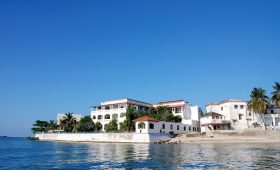Santo Antão: Explore Cabo Verde’s Diverse Island
Santo Antão, part of the Cabo Verde archipelago, offers a striking mix of landscapes and cultural experiences. Known for its volcanic origins, the island is characterized by mountainous terrain, high plateaus, and steep river valleys. The southern region is arid, while the northeast and higher elevations enjoy a semi-arid climate. This guide will help you navigate the island’s natural beauty and cultural richness.
Natural Attractions of Santo Antão
Santo Antão’s geography is a paradise for those who appreciate nature. From its towering peaks to lush valleys, the island offers a range of outdoor activities.
Monte Trigo Beach
Monte Trigo Beach, located on the island’s northwestern coast, is a serene spot with clear waters and sandy shores. While it offers a peaceful retreat, be aware that amenities are limited, so plan accordingly. Snorkeling is a popular activity here, thanks to the vibrant marine life.
Pico da Cruz
Pico da Cruz stands at 1,584 meters and offers challenging hikes with rewarding views of the island’s rugged landscape and the Atlantic Ocean. The trek requires proper hiking gear and plenty of water. It’s a demanding climb, so be prepared for a strenuous adventure.
Paul Valley
Paul Valley is a lush area ideal for hiking and exploring. The valley is dotted with picturesque villages, terraced fields, and waterfalls. Visitors can engage with local culture by exploring traditional homes and sampling local dishes. However, the terrain can be challenging, so sturdy footwear is recommended.
Cultural Experiences
Santo Antão is rich in cultural heritage, with friendly locals who welcome visitors. Here are some cultural highlights:
Local Markets
While Mindelo Market is on the neighboring island of São Vicente, Santo Antão has its own local markets where you can find fresh produce and crafts. Engage with vendors and try local dishes like “Cachupa,” a staple of Cape Verdean cuisine.
Morna Music
Morna music, popularized by Cesária Évora, is an essential part of Cape Verdean culture. Experience this soulful music in local bars and restaurants. While Mindelo is known for its vibrant music scene, Santo Antão offers a more intimate setting to enjoy these melodies.
Festivals and Celebrations
The island hosts various festivals that reflect its cultural heritage. Events like the Festas de São João feature parades, music, and traditional dances. If you visit during these times, you’ll experience the island’s lively spirit. However, be prepared for crowds and plan accommodations in advance.
Practical Information for Your Trip
Best Time to Visit
The dry season, from November to June, is ideal for visiting Santo Antão. The weather is pleasant, making it easier to explore outdoor attractions. The rainy season, from July to October, brings larger waves, appealing to surfers but potentially disrupting other activities.
How to Get There
Travelers typically fly into São Vicente’s international airport and then take a ferry to Santo Antão. The ferry ride offers scenic views of the coastline. Be aware that ferry schedules can vary, so check in advance.
Local Transportation
On the island, “aluguers” (shared taxis) are a common and affordable way to get around. For more flexibility, consider renting a car or hiring a private driver. Roads can be steep and winding, so ensure you’re comfortable with driving in such conditions.
Santo Antão offers a unique blend of natural beauty and cultural depth. Whether you’re hiking its peaks or enjoying its music, the island provides a memorable experience. Plan carefully to make the most of your visit to this diverse destination in Cabo Verde.




